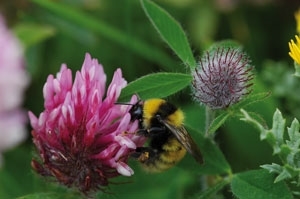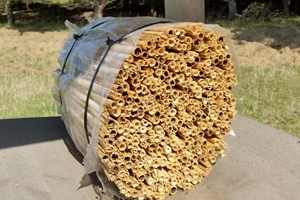 About one third of the food we eat would not be available but for bees. The economic value of honey bees and bumblebees as pollinators of commercially grown insect-pollinated crops in the UK has been estimated at over £200 million per year. But bees are having a tough time at the moment and we should be concerned about the situation.
About one third of the food we eat would not be available but for bees. The economic value of honey bees and bumblebees as pollinators of commercially grown insect-pollinated crops in the UK has been estimated at over £200 million per year. But bees are having a tough time at the moment and we should be concerned about the situation.
Key bee facts
- 24 species of bumblebee in the UK - most are in decline.
- 1/3 food we eat would not be available without bees.
- £200 million - the annual economic value of bees as pollinators.
- 400 worker bees in each colony.
- 8 months of the year pollen and nectar needs to be on offer for bees to flourish.
Encouraging bees in gardens
Many farmers are already growing pollen and nectar, but we can also help bumblebees by growing pollen and nectar-rich plants in our gardens. Lavender, bugloss, scabious, Knautia macedonia and Verbena bonariensis are all brilliant.
Other good flowers include:
- Alsike clover
- Red clover
- Bird’s-foot trefoil
- Lucerne
- Sainfoin
- Black knapweed
- Creeping and meadow buttercup
- Ox-eye daisy
Try to plant a range of flowers that prodce pollen and nectar from early spring right through to the autumn.
Solitary bees
 Around 225 species of solitary bees feed upon a wide range of plant species, including some species also liked by bumblebees such as black knapweed, but also simpler flowers such as oxe-eye daisy, wild carrot, hogweed, scentless mayweed and dandelion. They can also be found foraging quite extensively on oilseed rape. Put simply: the more plant species, the better!
Around 225 species of solitary bees feed upon a wide range of plant species, including some species also liked by bumblebees such as black knapweed, but also simpler flowers such as oxe-eye daisy, wild carrot, hogweed, scentless mayweed and dandelion. They can also be found foraging quite extensively on oilseed rape. Put simply: the more plant species, the better!
Bees need nesting habitat too – they look for bare ground, old masonry, and holes in wood, which can be provided by bee hotels (pictured right).